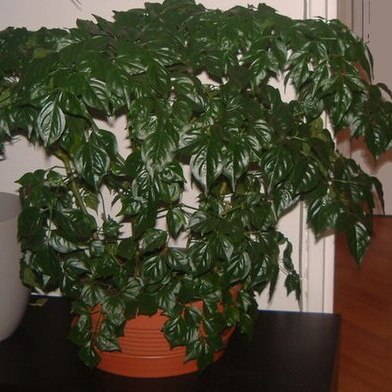Trees, rarely shrubs, evergreen (except 2 Indian and 2 Chinese spp.). Twigs and floral rachis mostly distinctly lenticellate. Innovations sticky-lacquered. Leaves 2-3-pinnate; stalks and leaflets articulated; rachis sulcate; leaflets underneath minutely but densely dotted, furthermore with gland-fields or scattered glands underneath, mostly acuminate, very rarely laxly puberulous. Thyrses terminal, very rarely ramiflorous, in one sp. a raceme; bracts and bracteoles inconspicuous, very rarely leafy; thyrses (and calyx) very rarely short-hairy. Flowers white, pink with yellow streaks in mouth, more rarely greenish yellow, or golden yellow to orange-red. Calyx closed in bud, rarely lobed from the beginning, splitting spatha-ceously (not to the base) or mostly irregularly lobed, rarely stunted, often with microscopical scale-like glands, moreover mostly with larger crateriform glands; after anthesis almost always circumscissile-dehiscing at the base, along an abscission line, in one sp. persistent. Corolla either salver-or narrow funnel-shaped or more commonly with a mostly short basal tube and often rather suddenly widened into an upper tube; lobes mostly rounded unequal, not rarely ciliate. Stamens didynamous with a 5th rudiment, but in one Chinese sp. 5 equal stamens, not exserted; another-cells V-shaped divergent; filaments inserted at the apex of the basal tube, except in two spp. capitate-glandular hairy at the insertion and in the basal part, for the rest glabrous; connective produced. Ovary elongate often minutely lepidote, glabrous, or tuberculate, never hairy; in both cells with several rows of ovules; style filiform, mostly exceeding the anthers; stigma 2-lipped. Capsule linear, terete, up to 75 cm; valves smooth, pergamentaceous, rarely ± woody, in one sp. tuberculate; septum terete, brittle, corky, but with shallow impressions of the flat seeds, a narrow line on both sides testimony of attachment to the middle of the valves. Seeds very, flat, small, narrow, on both ends with a hyaline wing.
More
Trees. Leaves opposite, 1-3-pinnately compound; leaflets entire, petiolate. Inflorescences paniculate or reduced almost to fascicles, terminal or lateral; bracts and bractlets linear or leaflike. Calyx campanulate, apex 5-lobed or truncate. Corolla funnelform-campanulate or salverform; tube short or long, limb slightly bilabiate; lobes rounded, spreading. Stamens 4(or 5), didynamous or subequal; staminode usually present. Disc annular, slightly fleshy. Ovary terete; ovules numerous, 2-rowed in each locule. Style included; stigma ligulate, 2-lobed. Capsule dehiscing loculicidally, long, terete, 2-angular; septum compressed, woody. Seeds compressed, transparent membranous winged at both ends.
Lowland primary and secondary rainforests, up to c. 1500 m, not rarely pioneering in disturbed forest and on slopes.Flower colour and corolla shape vary from pure white to orange-red and from hypocrateriform (R. sinica (HANCE) HEMSL. and R. frondosa CHUN & How) to tubular or campanulate. For the narrow-tubular orange-flowered species pollination by birds can be expected (R. ramiflora) and for the pure white, possibly nocturnal R. peninsularis hawk-moths may be the pollinating insects.Ramiflory is found in Malesia in R. ramiflora; it occurs also occasionally in poor forms of R. pinnata after leader-shoots have been damaged. In continental Asia it is also found in R. ignea (KURZ) STEEN. and in R. hainanensis MERR.

